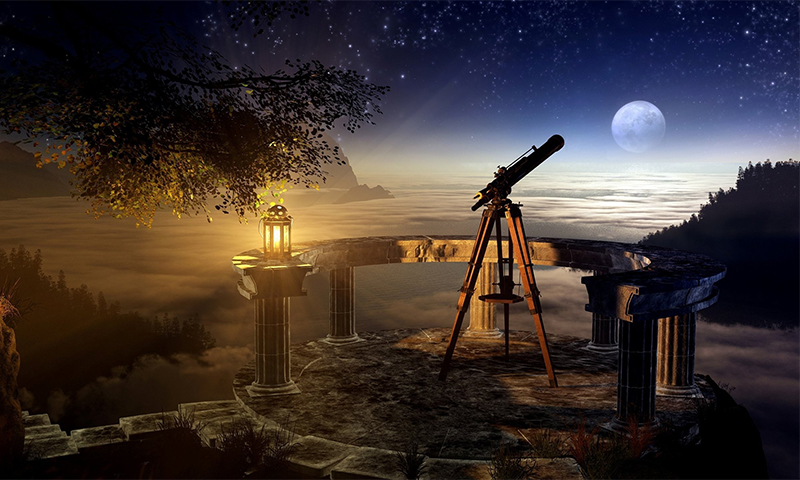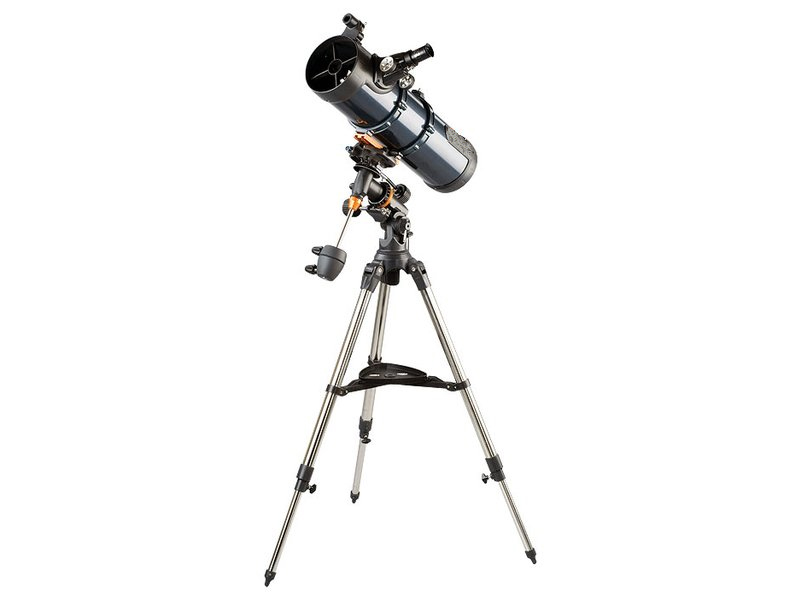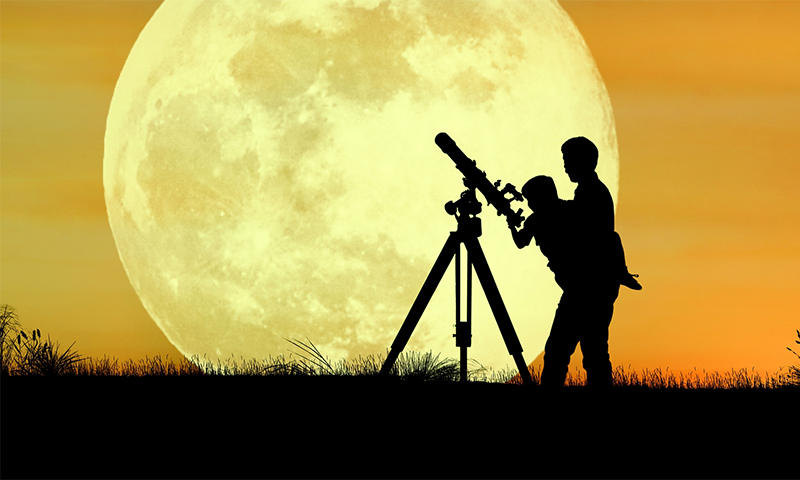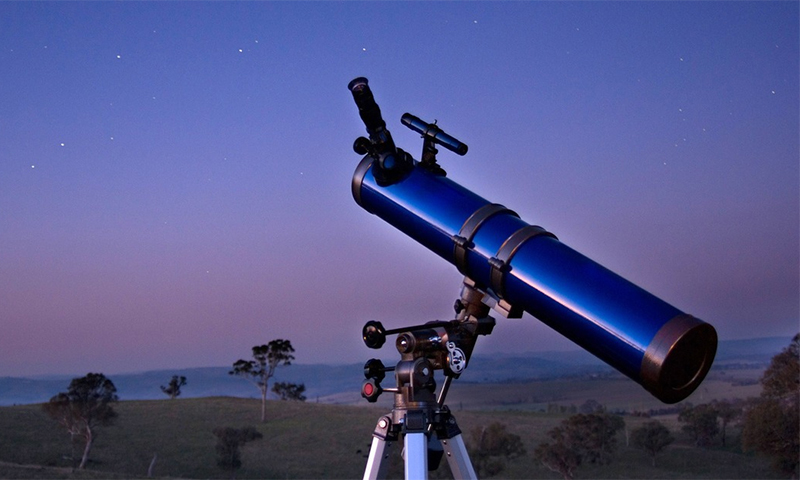Observing the beauty of distant celestial bodies becomes a fascinating hobby of not only experienced night sky experts, but also amateur astronomers, as well as curious school children. It is easy to “look into” deep space with powerful optical instruments at the observatory. But it is much more convenient to do this at home with a good telescope, through which you can spend hours admiring the lunar landscapes and the flight of comets.

Content:
The best manufacturers of telescopes - which company to choose
In the Russian market of optical technology, telescopes occupy not the widest niche, but the range here is quite decent and is represented by products of many well-known companies.
Large manufacturers offer optics for users of different levels. Full-fledged series for beginners and even inexpensive devices specially designed for children and teenagers have already appeared.
Telescopes for professionals are still the subject of particular pride of famous brands - not just optical devices, but high-tech and “smart” devices.
Amateur and semi-professional telescopes of the following manufacturers became sales leaders of 2017:
- Sky-Watcher;
- Celestron;
- Bresser;
- Veber.
Read more about the most popular models of these brands in our ranking of the best telescopes. But choosing a telescope, focus primarily on their requirements for optics. Our tips will help determine which device you need.
The principle of operation and the device telescope

A telescope is a complex optical device with which you can see distant objects (astronomical or terrestrial) in multiple magnification.
Structurally, it is a tube, at one end of which there is a light-collecting lens and / or a concave mirror - an objective. On the other is the eyepiece - through it, we just consider the resulting image.
Also the design of the telescope includes:
1. Searcher for the detection of specific astronomical objects;
2. Light filters that mute too bright stars;
3. Diagonal mirrors (correction plates) that turn the picture, which the lens transmits "upside down."
Professional models with the capabilities of astrophotography and video can be additionally equipped with the following elements:
1. Sophisticated electronic equipment;
2. GPS system;
3. Electric motor
Types of telescopes
Refractors (lens)

You can recognize such a telescope by its simple construction, similar to a telescope. The lens and the eyepiece here are on the same axis, and the enlarged image is transmitted in a straight line - as in the very first devices, invented 400 years ago.
Refractors, or refracting telescopes collect the reflected light of celestial bodies with the help of 2-5 biconvex lenses spaced at both ends of the long tube of the body. This type of device is more suitable for beginners and astronomers, as it allows a good view of terrestrial objects and celestial bodies within our solar system.
The lenses installed in refractors decompose the light “caught” by the lens into spectral components, which leads to some loss of clarity of the image and makes it dimmer with too much magnification. It is recommended to use such a telescope in open areas outside the city, where the sky illumination is minimal.
Pros:
- Easy to operate and do not require specialized maintenance;
- Sealed design is protected from dust and moisture;
- They are not afraid of temperature changes;
- They give a clear and contrasting picture of near astronomical bodies;
- Have a long service life.
Minuses:
- Quite bulky and heavy (some models weigh up to 25 kg);
- The maximum diameter of the lens - 150 mm;
- Not suitable for observations in the city.
Depending on the type of lenses installed, telescopes are divided into the following types:
1. Achromatic - have small and medium degrees of increase, but give a flat picture.
2. Apochromatic - make the image more convex, but eliminate defects like a blurry outline and the manifestation of the secondary spectrum.
Reflectors (mirror)

The reflector picks up and transmits the light beam using two concave mirrors: one is in the lens of the tube, the other reflects the image at an angle, sending it to the side eyepiece.
Unlike a refractor, such optics are more adapted for studying deep space and obtaining a high-quality image of distant galaxies. Production of mirrors is cheaper than lenses, which affects the cost of devices. However, it will be difficult for a novice or child to cope with complex settings and image correctors.
Pros:
- Simplicity of design;
- Compact size and low weight;
- Perfectly capture dim light of distant cosmic bodies;
- Large aperture (from 250 to 400 mm), giving a brighter and clearer picture without defects;
- Lower price compared to similar refractors.
Minuses:
- Requires time and experience to set up;
- Dust or dirt may enter the open design of the device;
- They are afraid of temperature changes;
- Not suitable for observing terrestrial and nearby objects of the solar system.
Catadioptrics (mirror-lens)

The lens of catadioptric telescopes is assembled from lenses and mirrors, so it combines their advantages and compensates defects as much as possible with the help of special correction plates.
The image of both distant and nearby astronomical objects in such a device approaches the ideal, which allows not only to observe the stars, but also to make high-quality images.
Pros:
- Compact dimensions and transportability;
- Equally well suited for observing objects deep and near space;
- Give the highest quality image;
- Aperture up to 400 mm.
Minuses:
- High price;
- Long time of thermal stabilization of air inside the pipe;
- Complex construction.
Telescope selection options

Having decided to buy a telescope, you should decide on your basic requirements for this device.
The design and characteristics of the optics will depend on your answers to a number of questions:
1. Which objects would you like to see - the planets within our solar system or distant galaxies?
2. From where will you observe cosmic bodies - from your balcony you have the opportunity to travel with a telescope to the field?
3. Do you plan to do astrophotography?
We now turn to the main characteristics of modern telescopes.
Aperture (lens diameter)
The main criterion for choosing a telescope is the aperture of its lens. It determines the ability of a lens or mirror to collect light: the higher this characteristic, the more reflected rays will fall into the lens. So, it will give a high image quality and even be able to catch the weak reflected radiation from distant space objects.
When choosing an aperture for your goals, be guided by the following figures:
1. To obtain a clear picture of nearby planets or satellites, an instrument with a lens diameter of up to 150 mm is enough. In a city, it is better to reduce this figure to 70-90 mm.
2. A distant galaxy can see a device with an aperture of more than 200 mm.
3. If you plan to indulge in your favorite hobby in places far from the city with a low-lit night sky, you can try the maximum size of semi-professional lenses - up to 400 mm.
Focal length
The focal is the distance from the lens to the point in the eyepiece, where all the light rays are again collected in the beam. The degree of increase and the quality of the visible image depend on this indicator - the higher it is, the better we consider the object of interest.
The focus increases the length of the telescope itself, which is reflected in the convenience of its storage and transportation. Of course, it is more convenient to keep a short-focus device on the balcony, where F does not exceed 500-800 mm. This restriction does not apply only to catadioptrics - the luminous flux in them is refracted many times, and does not go in a straight line, which allows for a significantly shorter body.
Magnification
This indicator can be calculated by dividing the focal length by the same characteristic of your eyepiece. If the telescope F is 800 mm, and it is 16 for the eyepiece, then the optics will give you a 50-fold approximation.
The magnification of objects can be corrected by placing a more powerful or weaker eyepiece - today manufacturers offer optics from F from 4 to 40 mm, as well as Barlow lenses, which double the focus of the telescope itself.
1. In detail, it makes sense to consider only close space bodies (the Moon, for example).
2. To observe distant galaxies, the high magnification is not so important.
Mount type
Mount (stand for the telescope) is necessary in order to make the device convenient to use.
Complete with amateur and semi-professional optics usually comes one of 3 main types of special mobile supports:
1. Azimuth - the simplest stand, allowing you to shift the telescope horizontally and vertically. Most often, it is equipped with refractors and small catadioptrics. But for astrophotography azimuth mount is not suitable, because it does not allow to catch a clear picture.
2. Equatorial - has an impressive weight and dimensions, but it helps to find the necessary object by the given coordinates. Such a tripod is ideal for reflectors that "see" distant galaxies that are indistinguishable with the naked eye. Equatorial popular among fans of astrophotography.
3. The Dobson system is a compromise between an easy-to-use and cheap azimuth stand and a robust equatorial design. Often comes with powerful and expensive reflectors.
Which telescope to choose

1. It is better for a novice night sky researcher living in a city to buy a short-focus refractor with an aperture of 70-90 mm on an azimuth stand. If you can watch the stars somewhere "in the field", you can fork out a reflector of 110-250 mm with the Dobson mount included.
2. If your dream is to explore distant galaxies and nebulae, get a reflector with a lens diameter of 250 mm, equipped with an azimuth stand.
3. Travelers or those who are going to frequently transport their telescope will need a light and reliable mirror-lens apparatus equipped with a Dobson system or an azimuth stand.
4. Experienced astrophotographers cannot do without a catadioptric telescope with a maximum aperture (400 mm) and a long focus of 1000 mm. Mount better choose equatorial with automatic drive.
5. A student of 8-10 years old who is interested in stars can be presented with an inexpensive and easy-to-operate refractor telescope from a special children's series with an aperture of 70 mm on an azimuth mount. And an additional adapter for a camera will allow him to take beautiful pictures of the moon and ground objects.
How much is a telescope

1. The refractor on the azimuth mount can be purchased at prices ranging from 3,500 to 25,000 rubles. The cost will depend on the technical characteristics of the optics and the functionality of the device.
2. The mirror reflector on the equatorial stand will cost you between 14 and 55 thousand rubles.
3. For professional and powerful catadioptric apparatus will have to pay 18-95 thousand.
4. The price of a simple children's telescope starts at 1000 rubles and can reach 25,000 adults at all.
5. The cost of telescopes with the possibility of astrophotography starts from 10 thousand rubles and reaches 3 million.
It will be interesting to friends too







